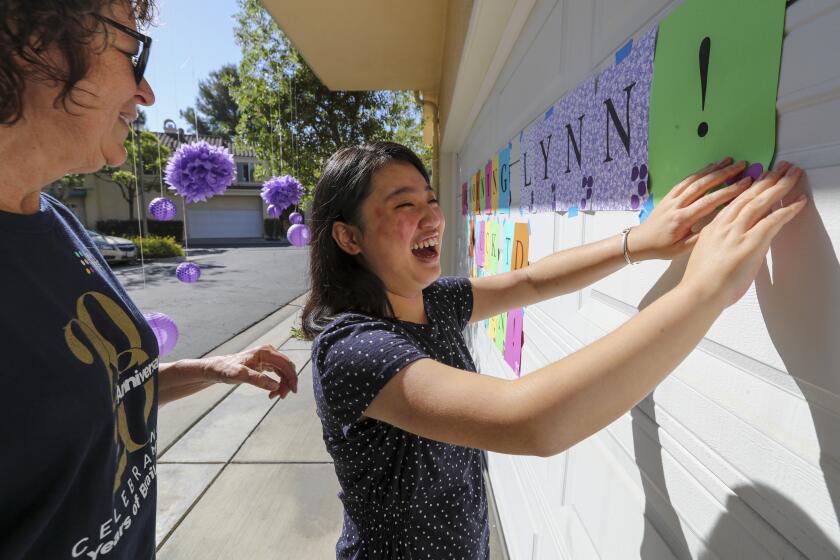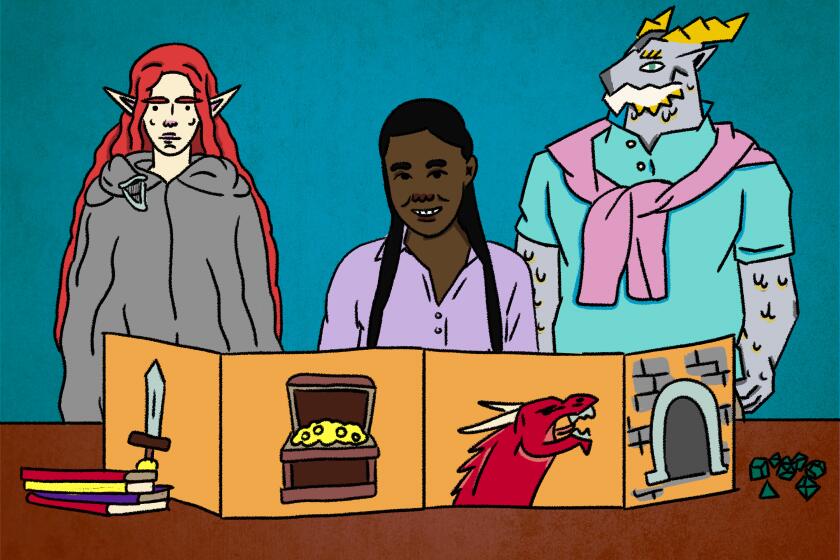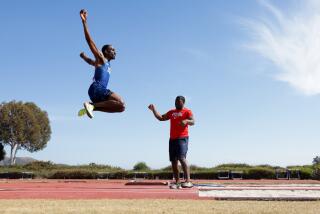Visually impaired face new challenges navigating a world remade by COVID-19
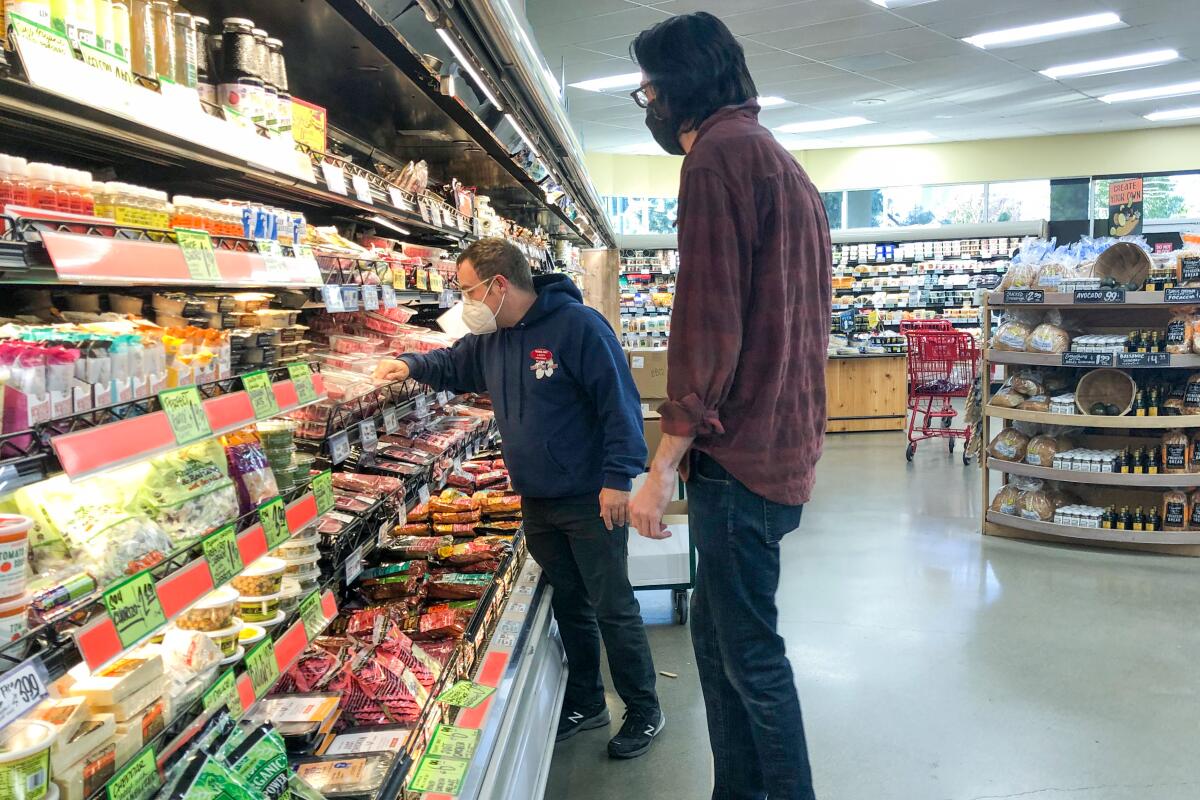
Will Butler breezed through the entrance of the Silver Lake Trader Joeâs, bypassing a small line of shoppers waiting to get in. An employee monitoring access said nothing as Butler swept a white cane to find his way inside.
Butler had no idea heâd cut in front.
âHow would I find the line?â the legally blind 31-year-old asked.
This time, there were no problems, but thatâs not always the case. On Sundays, âwhen the line is super long and everyoneâs like really scared and grumpy, no one will offer any help,â he said. On those days, Butler makes his way to the back of the queue, trying to maintain a socially distanced space without being able to see it.
Like so many challenges wrought by the COVID-19 pandemic, grocery store lines are just one of the new impediments thrown, literally, into the way of the visually impaired.
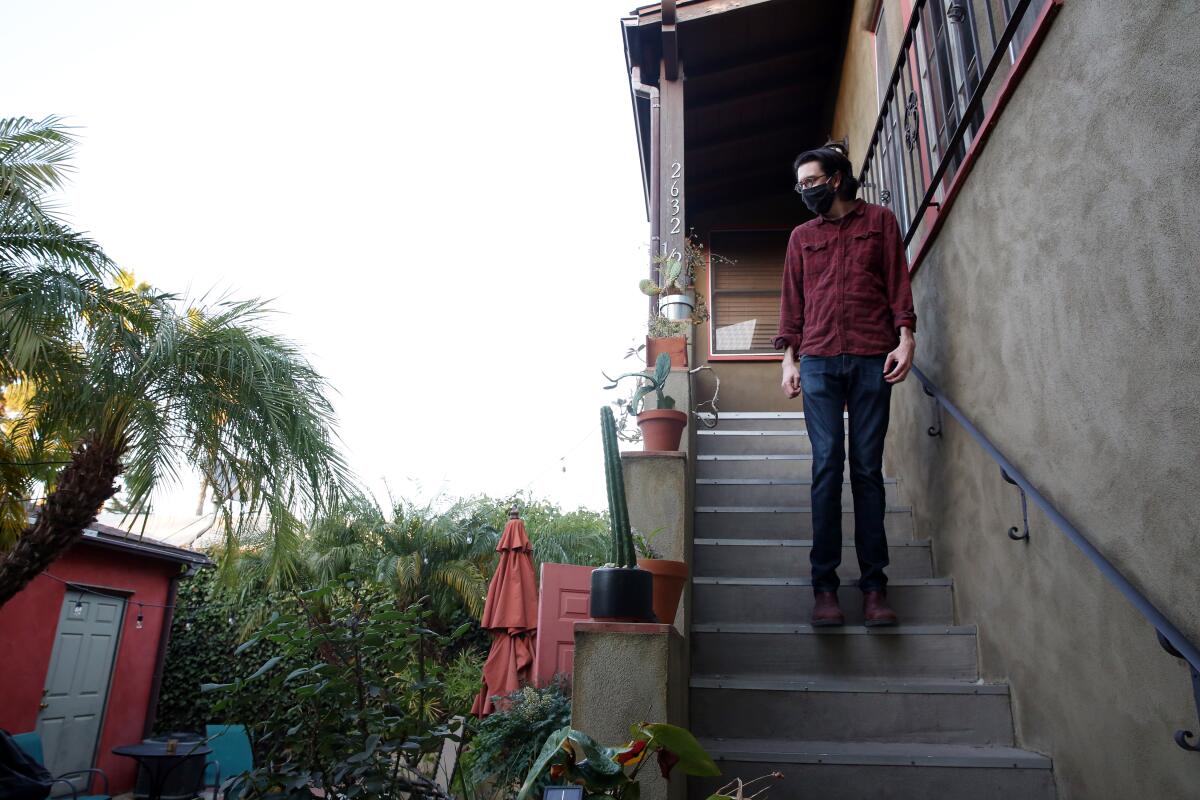
More than 188,000 people in Los Angeles County have âvision difficulty,â including those who are âblind or having serious difficulty seeing, even when wearing glasses,â according to U.S. census data from 2019.
The Braille Institute, a nonprofit organization based in L.A., serves nearly 12,900 adults and children across the county.
Those in the blind and low-vision community have long faced challenges now synonymous with the pandemic: social isolation, mobility limitations, classroom dynamics that are less than ideal. But the crisis has exacerbated those problems.
Friends arenât volunteering as many favors. Sighted strangers who may have previously lent a hand are more skittish to approach. Visually impaired children who learned daily tasks with a hand to guide their own are now relying on exhaustive verbal descriptions over video chats. And public transportation and ride-hailing apps such as Uber and Lyft â lifelines for those who canât drive or live alone â now pose potential health risks.
âEverybodyâs feeling kind of shut in right now and out of touch with people, but we already have that isolation. So for us, it just has deepened even more,â said Diane Wilkinson, 56, who has retinitis pigmentosa, a degenerative retinal disease.
Visual cues during the pandemic are difficult to navigate for those who canât see. It is impossible to tell whether someone is six feet away or wearing a mask.
And masks present other obstacles. Butler helps orient himself with the sound of voices, which can be muffled behind cloth or plastic barriers.
Wilkinson still has some peripheral vision, and masks can obscure the limited sight she has.
She sometimes bumps into people. In pre-pandemic times, most were understanding. Now, she said, theyâre scared.
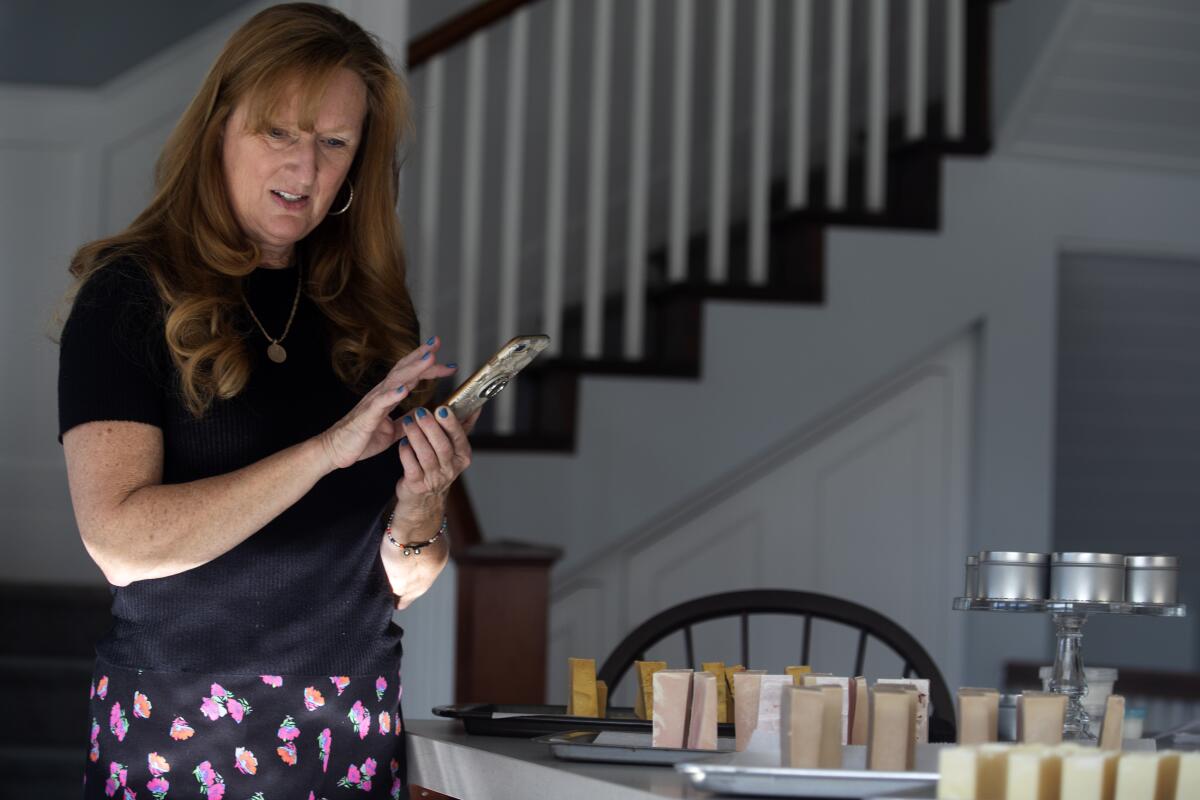
The access and administration of coronavirus tests can be a challenge too. Many of the testing sites in Los Angeles County are drive-through. The visually impaired could hail a ride to a testing facility, but many are financially disadvantaged and canât afford the extra trip. Mail order tests are an option, but many canât read the instructions.
For those living on their own, like Butler, getting COVID-19 âis kind of your worst nightmare,â said Butler, who began losing his vision when he was 19 from a retinal detachment.
âYou canât see already, but what COVID does is, if itâs bad, itâll disengage your ability to speak,â he said. âSo if you canât write and you canât speak and you canât see the FaceTime call, you canât do anything but listen. Itâs like torture.â
An app called Be My Eyes, for which Butler works, allows volunteers to assist visually impaired people by describing what the user points at with their phone camera. It has partnered with Accessible Pharmacy, a home-delivery pharmacy based in Philadelphia that specializes in services for the blind and low-vision community. Users can order medications with Braille labels or have COVID-19 test instructions read to them.
But many in the blind community donât know about that option, Butler said, noting he wished bigger pharmacies would provide such services.
The Braille Institute offers three times as many support group sessions to students in Southern California as it did a year ago, when the coronavirus was first detected in the U.S., according to Sergio Oliva, associate vice president of the instituteâs programs and services. Because of COVID-19 restrictions, all sessions are provided over the phone or online.
âJust close your eyes and imagine all you can do is hear what is going on,â Oliva said. âIt brings a lot of anxiety. It brings a lot of depression.â
Gen Z has embraced âbrain sports,â but as the pandemic sidelined most spellers and mathletes, Braille Challenge contenders found a way.
Life for the visually impaired, like so many others, has been maneuvered by more screen time during the pandemic. The Braille Institute, which offers courses such as how to read Braille and cooking, moved its classes online at the beginning of May. Previously, the free classes were offered in person only.
Troubleshooting a video session â a messy room showing up in the frame or the web camera being too close to your face â is awkward enough for those who can see. For those who canât, it can be a daunting task, especially for young children who have to face sometimes less-than-sensitive classmates.
âVideo meeting, itâs a very visual medium,â said Matthew Beckwith, the youth programs manager at the Braille Institute. âSo for kids who have visual impairments, itâs a matter of how do you actually engage?â
In California, visually impaired students without other disabilities learn academic subjects alongside their sighted peers. When the coronavirus shut down classrooms last spring and distance learning become the norm at most schools, children with disabilities were disadvantaged more than most.
The Braille Institute offers specialized supplemental classes and now sends young students a âdistance-learning kitâ with tools such as a smartphone or a tablet stand, Beckwith said. The students are taught how to set up the stand, how far to place the camera and how to present themselves.
But not all teachers are convinced that distance learning is feasible for the visually impaired. Krista Bulger, a teacher in Vancouver, Wash., who works exclusively with visually impaired children, says the kind of hands-on education offered inside a classroom to students with disabilities âcanât be replicated in the same way. It just canât.â
Bulger said that early in the pandemic, she pushed school districts in Washington to allow her to gather her studentsâ accessibility devices from their classrooms while she transitioned to online teaching. Devices and software designed for the visually impaired are often pricey, and students and adults alike may be able to use them only in a classroom or community setting.
Later, as some classrooms were reopened with a limited group of students, Bulger fought to have visually impaired children, who were part of the general education program in the state, allowed back on campus along with others with special needs. She now sees students primarily one-on-one, employing safety precautions such as using gloves when she touches a studentâs hand or device.
Bulgerâs 14-year-old son, Owen, who is progressively losing his vision, recently resumed in-person instruction with a mobility specialist. With the help of his instructor, Owen is learning how to cross the street ânot visuallyâ but by listening and using others cues, Bulger said, adding that itâs one of the things that canât be taught from a distance.
âIf a provider doesnât want to be in person, then that just creates another barrier to optimal instruction, â she said, adding that some students âneed that hand over hand when youâre pressing their finger on a [device].â
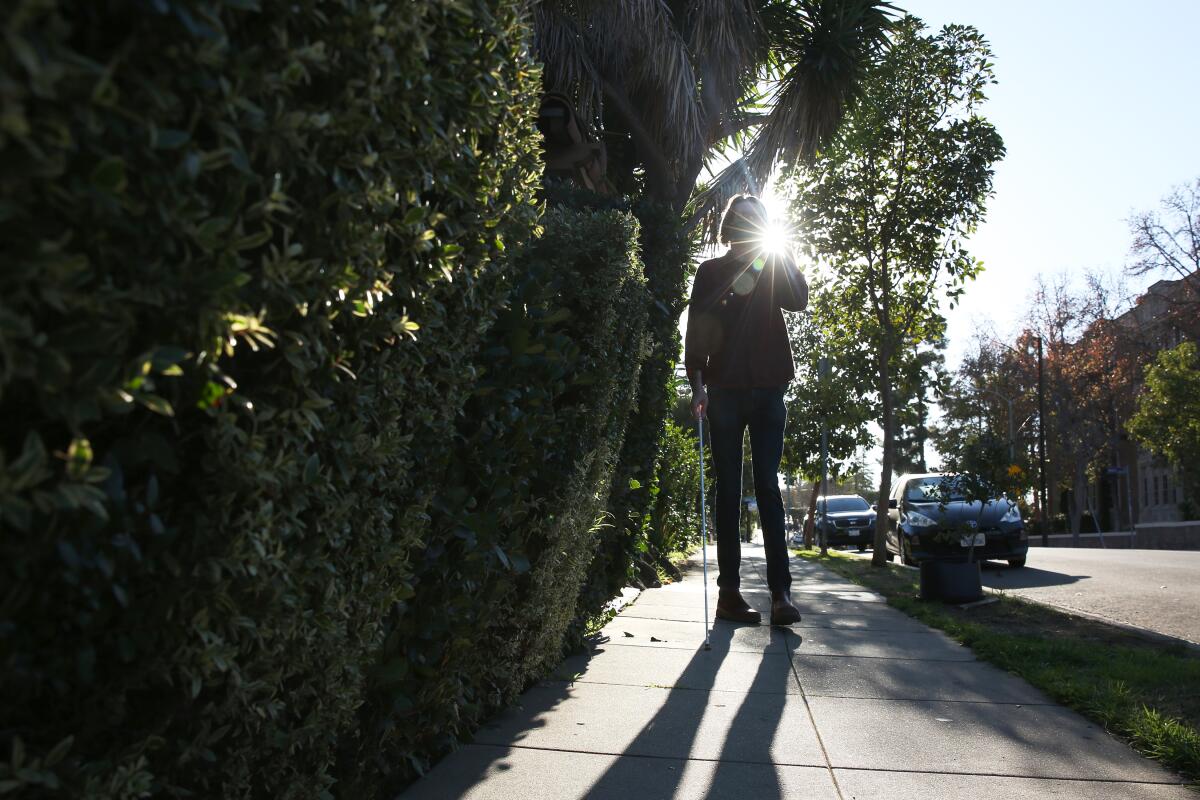
Many with visual impairments whoâve been forced to become tech savvy during the pandemic arenât digital natives.
âIt is a technology hill to climb â to learn, but it feels good to be on that,â said Annette Nickerson, 81, who learned to use video meeting software through the Braille Institute. Nickerson has macular degeneration, one of the most common causes of vision loss for older people.
Coronavirus restrictions have led to the loss of gym access and in-person classes, which can be isolating, Nickerson said. But with the ability to make video calls from her computer and phone, she can meet friends and family more safely.
And technology also has adapted to COVID-19 protocols. Sunu, an armband that uses echolocation-like technology to help guide the visually impaired, now offers a setting to alert users when someone or something is six feet away.
With little else to do, the COVID-19 pandemic has given D&D players a reason to gather virtually to go on heroic quests in the increasingly popular role-playing game.
The pandemic has also led to new hobbies for some and offered more time for old interests.
Christopher Adamson, 13, misses his friends but says he now has more time to play chess.
AlstrĂśm syndrome, a rare genetic disease that claimed Christopherâs vision by third grade, puts him in the high-risk category for a serious case of COVID-19 so he takes care to avoid public interaction as much as possible. But that hasnât hindered his passion for the game of kings.
Christopher, who lives in San Diego, canât see friends, but he can call them. And those who know algebraic notations â essentially the coordinates of a chessboard â can play chess with him over the phone or by email. He says a move, his partner says another and so on. It can go on for hours.
Heâs currently playing a tournament over email. âI just made a move, and it seems to be going well,â he said via Zoom.
Although many who were stuck at home took to making sourdough starters or gardening during months-long lockdowns and intermittent quarantines, interests in podcasts and book clubs shot up among the visually impaired community, according to the Braille Instituteâs Oliva. As with many tasks of daily life, sometimes-creative modifications or special technology can be needed to bridge the access gap.
It may seem easy enough to binge a podcast without sight, but logging on to an app and finding something worth listening to can be tricky. Thatâs why Beverly Jensen, a tech instructor at the Braille Institute, teaches an entire class on accessibility software.
The Braille Instituteâs library continues to send hard-copy Braille books to students, Oliva said. But others can download copies on a refreshable Braille display. Designed to pair with a computer or smartphone, the display electronically raises and lowers different combinations of pins to create a Braille translation of the text that continuously refreshes as the reader goes along.
Itâs a game changer for those who donât want to lug around books made all the more thick with Braille code. A popular book such as âThe Hunger Gamesâ could stretch to several heavy volumes in Braille, Oliva said, whereas the Braille reader captures the novel in one device about the size of a keyboard.
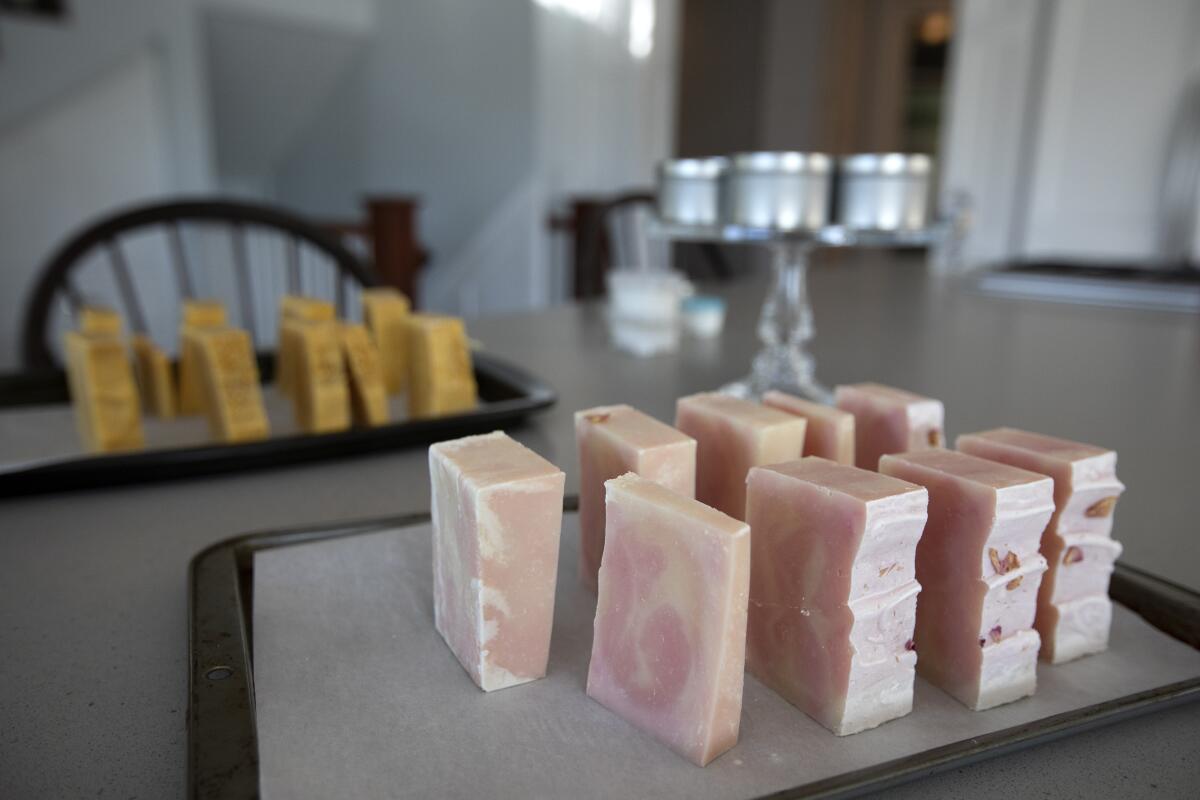
Wilkinson, a Braille Institute board member, has been stuck at home during the pandemic, and like many Angelenos, was looking for something to do.
One of her friends showed her how to make lotion and soap over the summer but warned that some of the processes involved lye, a compound that can burn the skin. Wilkinson didnât think she could safely do it on her own. But as stay-at-home restrictions wore on, she decided to buy a kit last fall and give it a try.
She struggled with finding a visually accessible thermometer, but she now calls volunteers through the Be My Eyes app to read the temperatures to her. The assistance has made her quarantine hobby a success.
In her La Verne home, Wilkinson laid out trays of fragrant soaps in an array of colors: rosy pink, soft orange, earthy yellow and chocolate brown.
But something amused her as she ran her hands along the soaps: The bars were not all the same width.
âThatâs because I canât see how thick Iâm cutting them,â she said.
More to Read
Sign up for Essential California
The most important California stories and recommendations in your inbox every morning.
You may occasionally receive promotional content from the Los Angeles Times.

